 W
WAnimal Farm is an allegorical novella by George Orwell, first published in England on 17 August 1945. The book tells the story of a group of farm animals who rebel against their human farmer, hoping to create a society where the animals can be equal, free, and happy. Ultimately, however, the rebellion is betrayed, and the farm ends up in a state as bad as it was before, under the dictatorship of a pig named Napoleon.
 W
WAl-Baqarah is the second and longest chapter (sūrah) of the Quran. It consists of 286 verses (āyāt), 6,201 words and 25,500 letters.
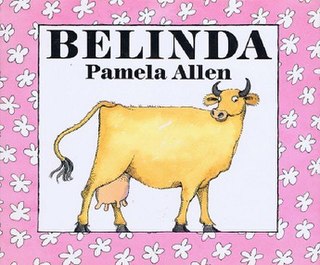 W
WBelinda is a 1992 children's picture book written and illustrated by Pamela Allen.
 W
WBoes is a Dutch newspaper gag-a-day comic strip created by Wil Raymakers and Thijs Wilms. It was created in 1980 and spawned a popular anime television series between 1988 and 1991 called Ox Tales in the English-speaking world. The comic managed to outlive the animated adaptation and still continues to appear as a column strip in several Dutch daily and weekly newspapers.
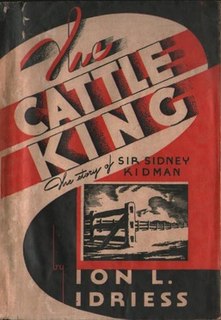 W
WThe Cattle King is an Australian biography of Sidney Kidman.
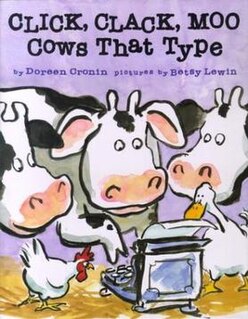 W
WClick, Clack, Moo: Cows That Type is a 2000 children's book by Doreen Cronin. Illustrated by Betsy Lewin, the Simon & Schuster book tells the story of Farmer Brown's cows, who find an old typewriter in the barn and proceed to write letters to Farmer Brown, making various demands and then going on strike when they aren't met.
 W
WDeath in the Afternoon is a non-fiction book written by Ernest Hemingway about the ceremony and traditions of Spanish bullfighting, published in 1932. The book provides a look at the history and what Hemingway considers the magnificence of bullfighting. It also contains a deeper contemplation on the nature of fear and courage. While essentially a guide book, there are three main sections: Hemingway's work, pictures, and a glossary of terms.
 W
WDirty Beasts is a 1983 collection of Roald Dahl poems about unsuspecting animals. Intended to be a follow-up to Revolting Rhymes, the original Jonathan Cape edition was illustrated by Rosemary Faucet. In 1984, a revised edition was published with illustrations by Quentin Blake. An audiobook recording was released in the 1980s read by Prunella Scales and Timothy West. Later in 1998 Puffin Audiobooks published a recording featuring Pam Ferris and Geoffrey Palmer, and in 2002 Harper Audio released a recording of Alan Cumming reading both Revolting Rhymes and Dirty Beasts.
 W
W"Hey Diddle Diddle" is an English nursery rhyme. It has a Roud Folk Song Index number of 19478.
 W
W"Little Boy Blue" is a popular English-language nursery rhyme, often used in popular culture. It has a Roud Folk Song Index number of 11318.
 W
WThe Magic World is an influential collection of twelve short stories by E. Nesbit. It was first published in book form in 1912 by Macmillan and Co. Ltd., with illustrations by H. R. Millar and Gerald Spencer Pryse. The stories, previously printed in magazines such as Blackie's Children's Annual, are typical of Nesbit's arch, ironic, clever fantasies for children.
 W
WMoo, Baa, La La La! is a 1982 picture book by Sandra Boynton about various animals and the noises they make.
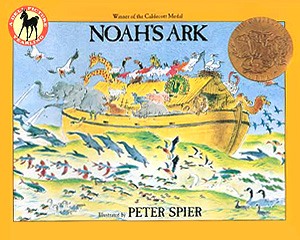 W
WNoah's Ark is a picture book written and illustrated by Peter Spier, first published by Doubleday in 1977. The text includes Spier's translation of "The Flood" by Jacobus Revius, a 17th-century poem telling the Bible story of Noah's Ark. According to Kirkus Reviews, the poem comprises sixty three-syllable lines such as "Pair by pair". "Without revising or even enlarging on the old story, Spier fills it in, delightfully." In a retrospective essay about the Caldecott Medal-winning books from 1976 to 1985, Barbara Bader described the book as "at once elaborate and feeble" and Revius' poem as "neither particularly suited to children nor eloquent in itself."
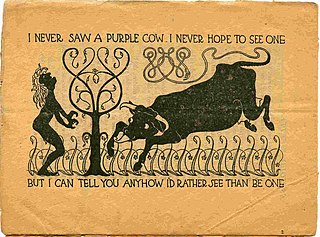 W
W"Purple Cow" is a short nonsense poem by American writer Gelett Burgess. It was first published in 1895.
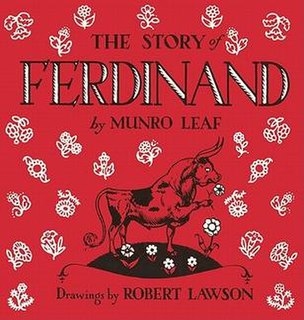 W
WThe Story of Ferdinand (1936) is the best known work written by American author Munro Leaf. Illustrated by Robert Lawson, the children's book tells the story of a bull who would rather smell flowers than fight in bullfights. He sits in the middle of the bull ring failing to take heed of any of the provocations of the matador and others to fight. Ferdinand did not possess the more violent tendencies that bulls his age had. The Story of Ferdinand was published in 1936 by Viking Hardcover. After this book was published, it was labeled as having an alternate political agenda following the Civil War in Spain.
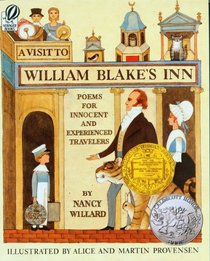 W
WA Visit to William Blake's Inn: Poems for Innocent and Experienced Travelers is a children's picture book written by Nancy Willard and illustrated by Alice and Martin Provensen, published by Harcourt Brace in 1981. The next year Willard won the annual Newbery Medal and the Provensens were one runner-up for the Caldecott Medal from the professional children's librarians. William Blake's Inn was the first Newbery-winning book to also be named a Caldecott Honor Book. Last Stop on Market Street later won the 2016 Newbery Medal and a Caldecott Honor.
 W
WThe Voyage of QV66 is a children's novel by Penelope Lively. It is set in a strange, flooded, somewhat post-apocalyptic England devoid of people, and centres on a group of animals consisting of a dog, a cat, a cow, a horse, a pigeon and a mysterious character named "Stanley".
 W
WWhere's My Cow? is a picture book written by Terry Pratchett and illustrated by Melvyn Grant. It is based on a book that features in Pratchett's Discworld novel Thud!, in which Samuel Vimes reads it to his son.